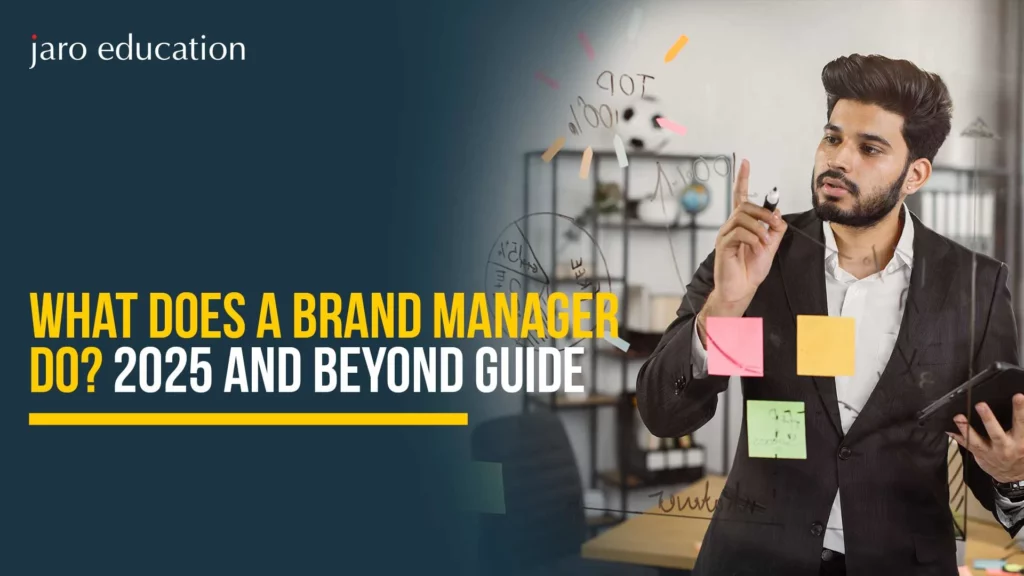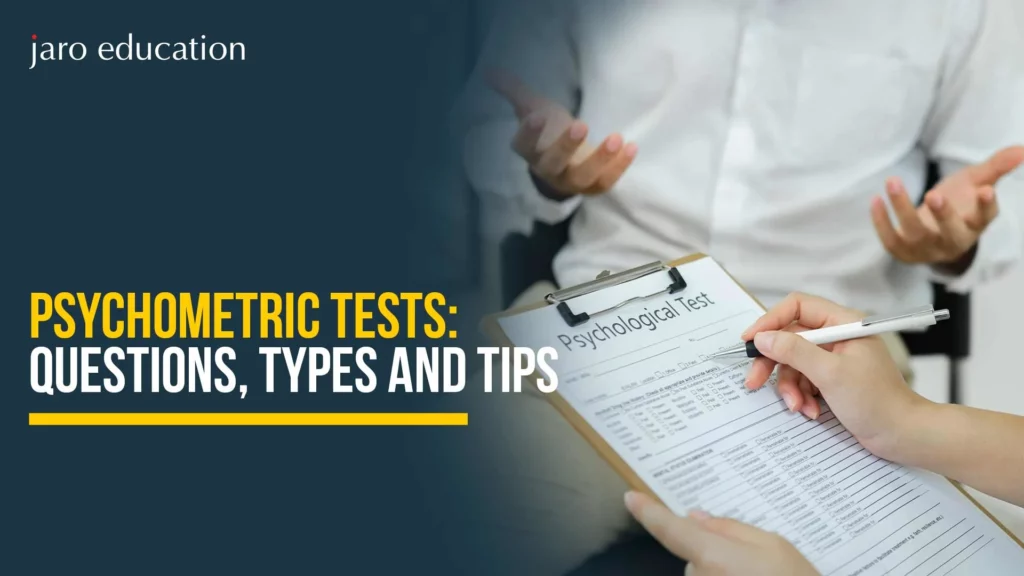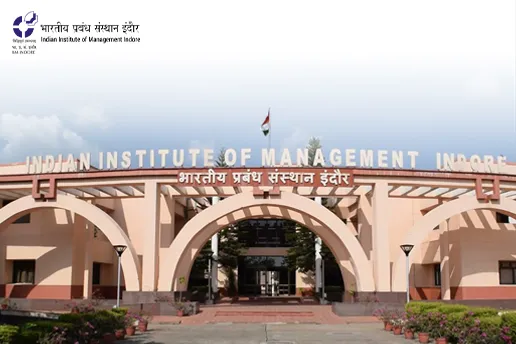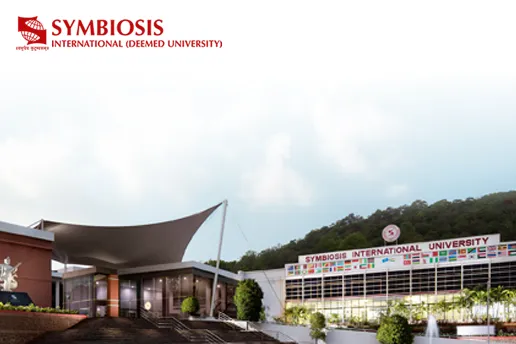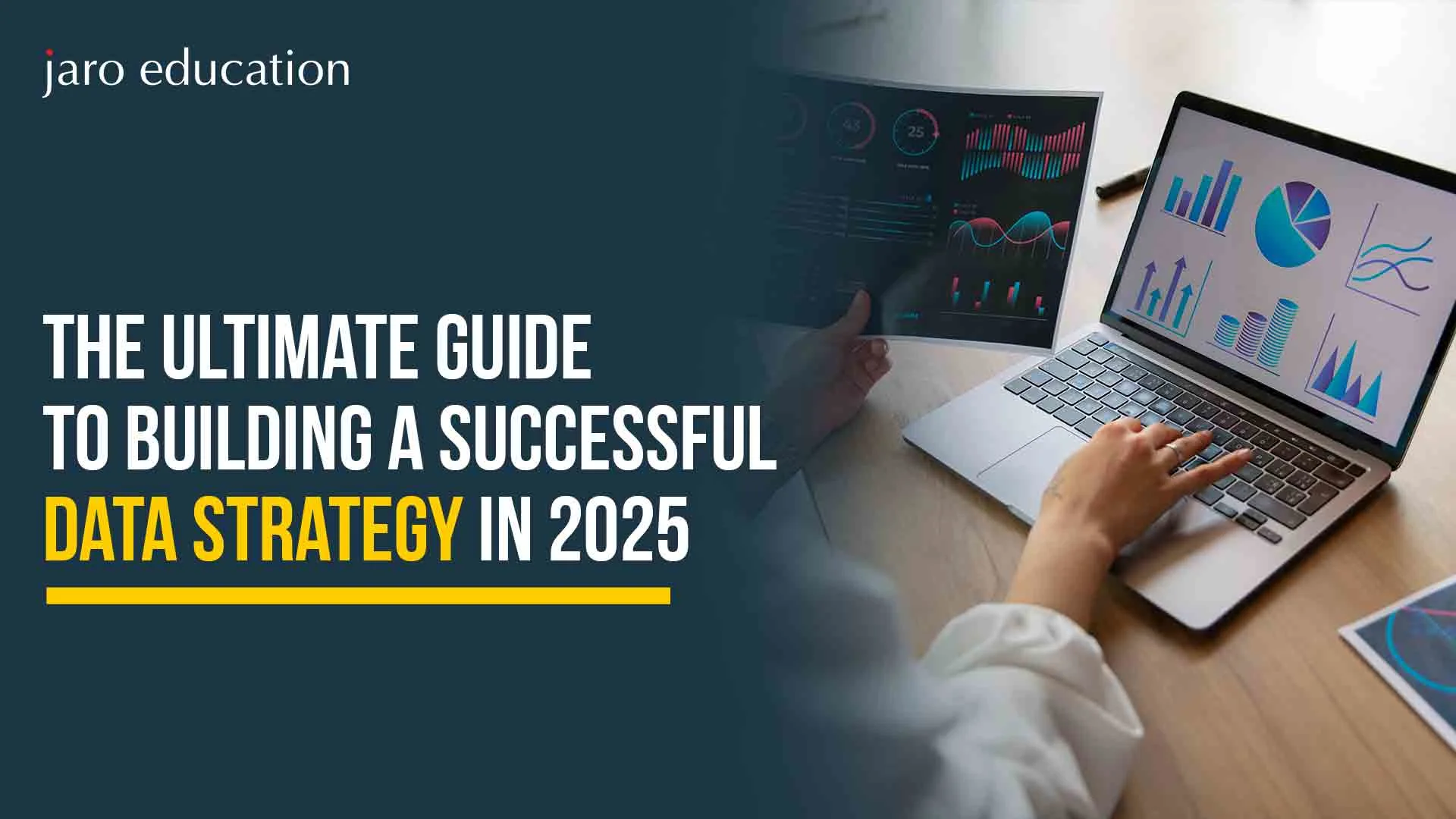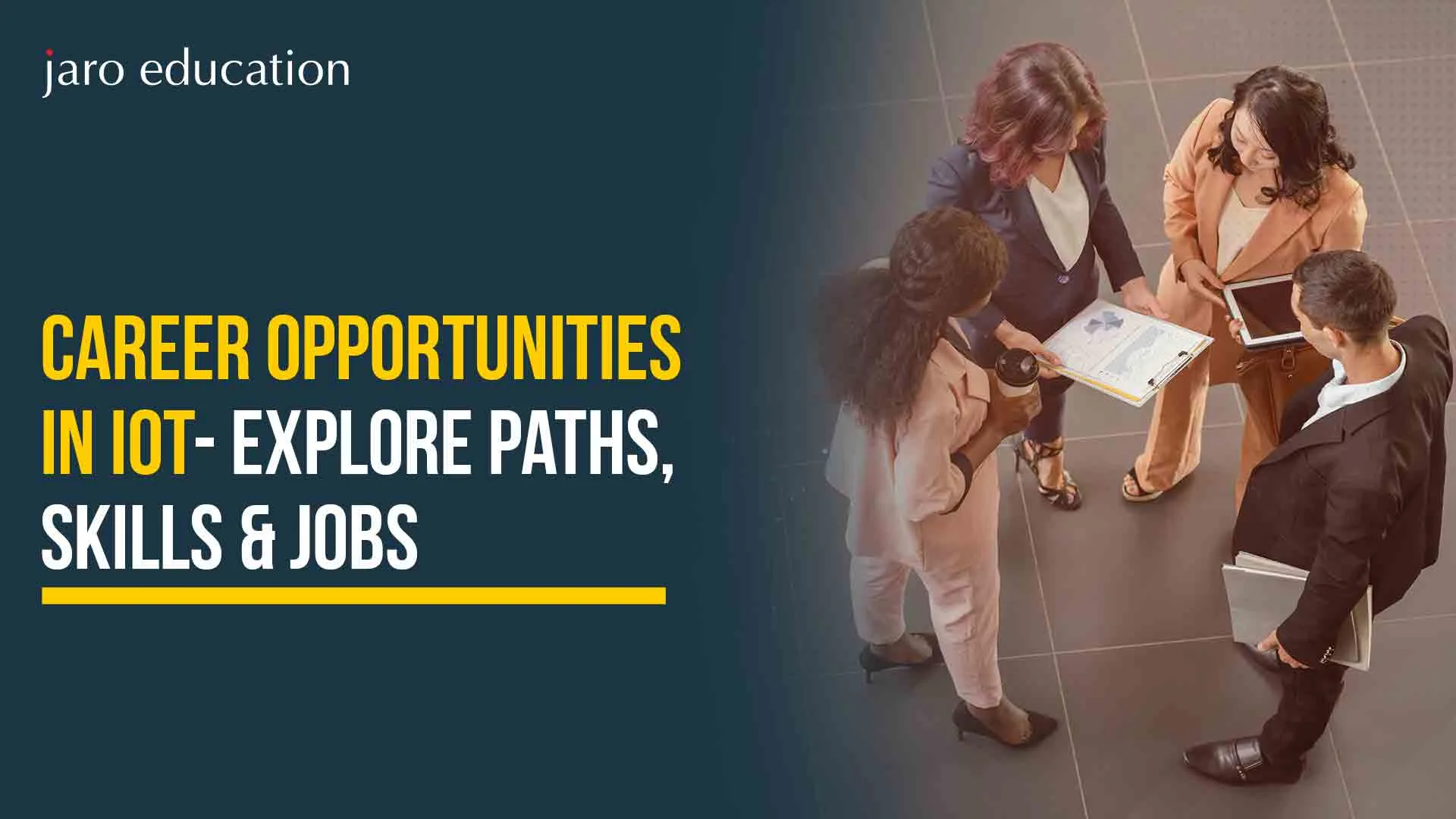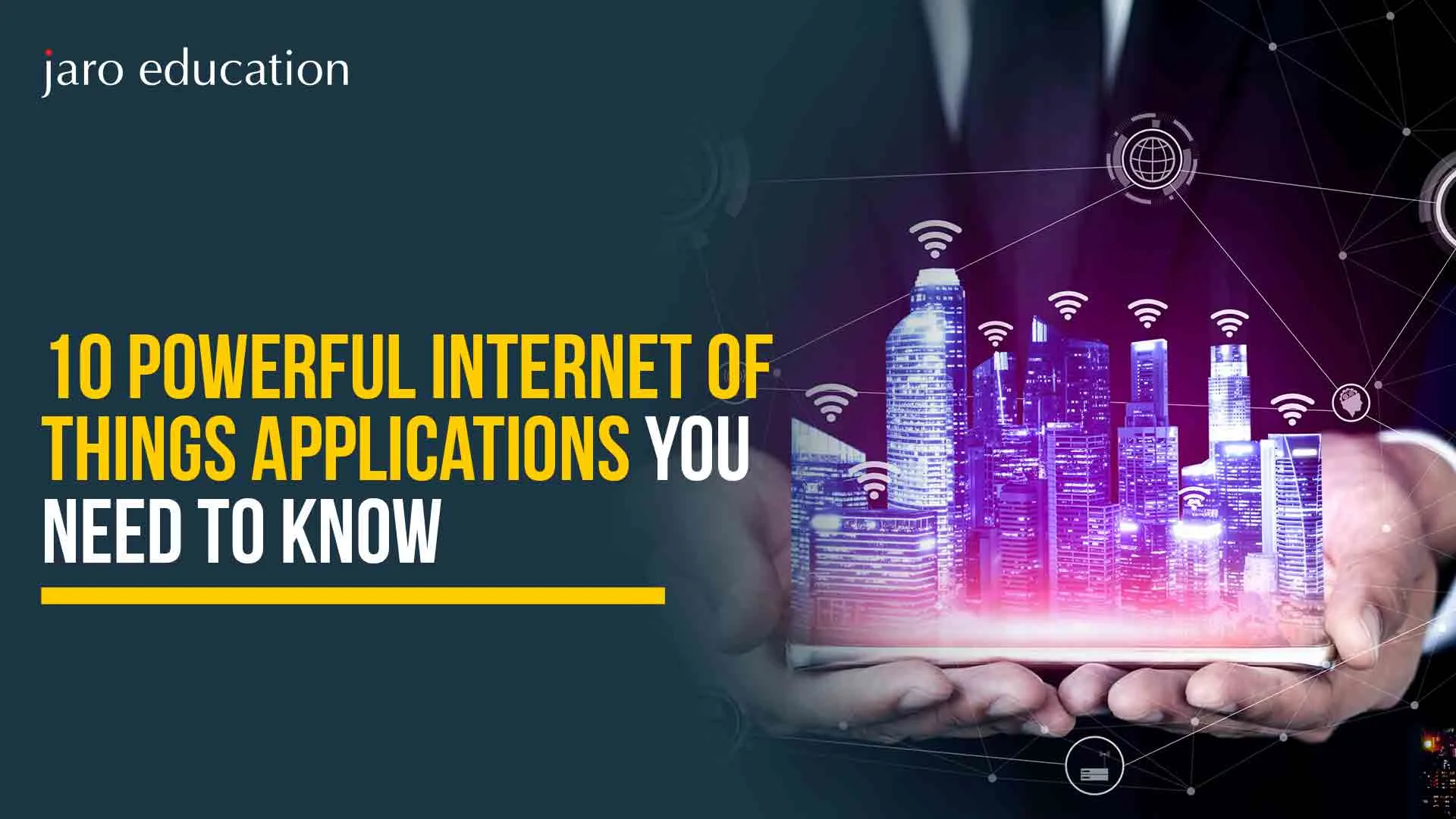Top 20 IoT Interview Questions & Answers 2025 for All Levels
Table of Contents
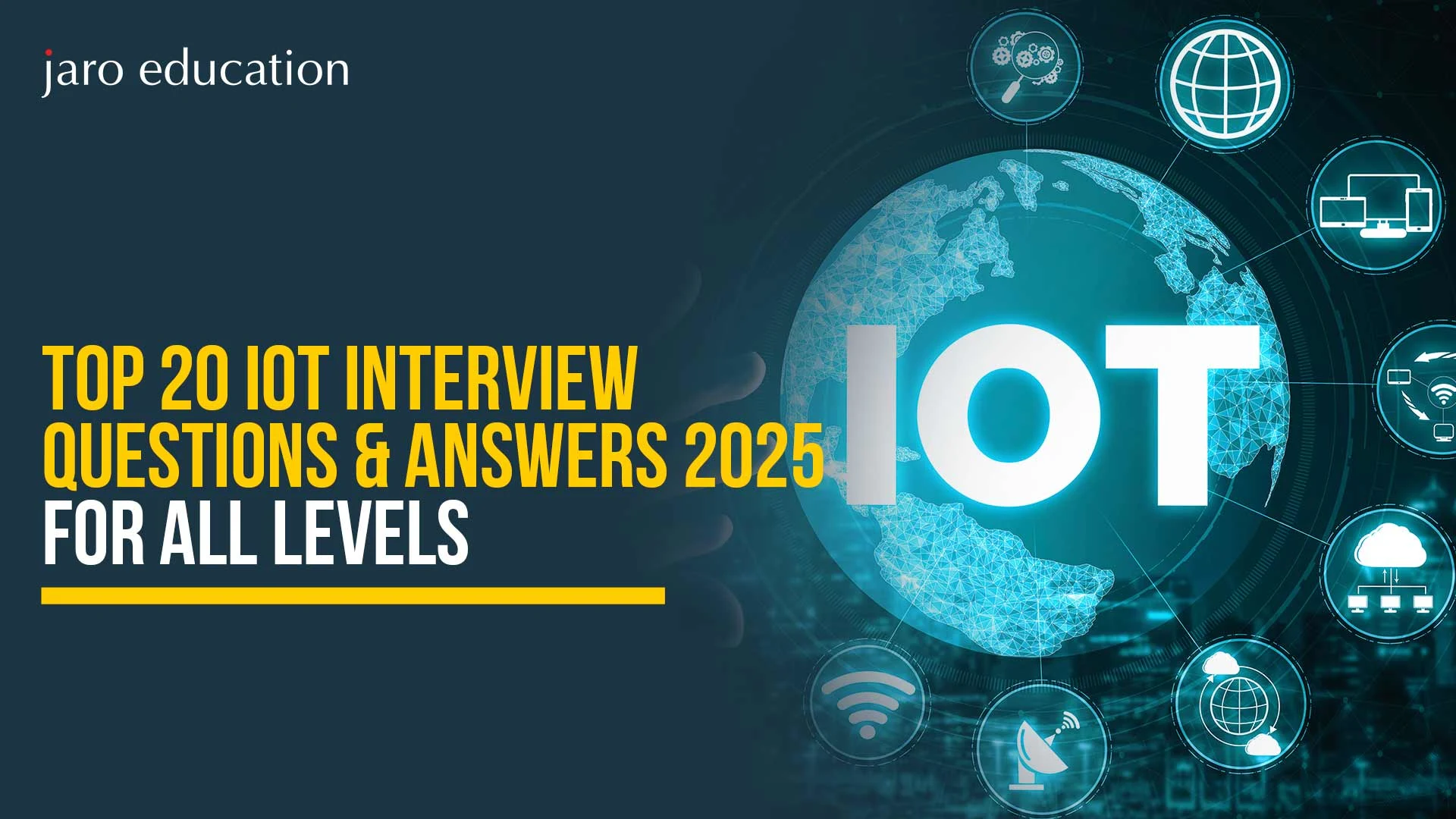
In today’s tech-driven world, the Internet of Things (IoT) is no longer a buzzword—it’s a revolution. From smart homes and wearable devices to industrial automation and healthcare innovations, IoT is at the forefront of digital transformation. With the rapid expansion of this domain, the demand for skilled professionals is at an all-time high. Whether you’re a beginner preparing for your first job or a seasoned expert aiming for a senior role, mastering IoT interview questions is crucial to your career growth.
This comprehensive guide covers the top 20 IoT interview questions and answers for 2025, spanning all experience levels. From basic IoT interview questions to advanced IoT interview questions for experienced professionals, we’ve included everything you need to ace your next job interview. This guide also serves as a valuable resource for academic preparations, including IoT viva questions and important IoT questions commonly asked in university assessments.
Why Focus on IoT Interview Questions in 2025?
As IoT becomes more integrated into everyday life and enterprise ecosystems, employers are looking for individuals who understand both the foundational concepts and the latest advancements in the field. The right preparation can set you apart from the competition. That’s why we’ve curated this list of IoT interview questions for freshers, intermediates, and experts, ensuring comprehensive readiness.
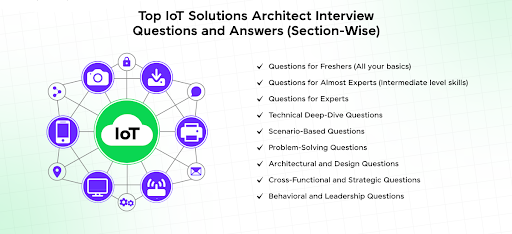
*encrypted-tbn0.gstatic.com
Basic IoT Interview Questions – For Beginners and Students
Let’s begin with the IoT interview questions for freshers. These cover fundamental concepts and terminologies every aspiring IoT engineer must know.
1. What is IoT?
Answer: IoT, or the Internet of Things, is a network of interconnected physical devices embedded with sensors, software, and other technologies that enable them to collect and exchange data over the internet. It allows devices such as home appliances, vehicles, industrial machines, and wearable gadgets to communicate and perform tasks autonomously or with minimal human intervention.
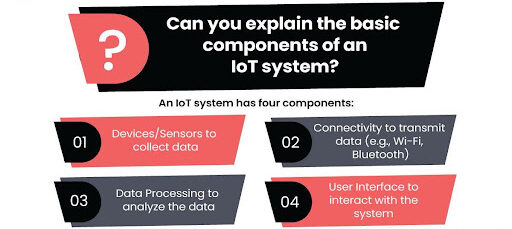
*gsdcouncil.org
2. Explain the basic components of an IoT system.
Answer: An IoT system typically consists of four key components:
- Sensors/Devices: Collect real-world data.
- Connectivity: Transmit data using Wi-Fi, Bluetooth, Zigbee, etc.
- Data Processing: Analyse the data through cloud or edge computing.
- User Interface: Present information to users via apps or dashboards.
This is one of the most frequently asked basic IoT interview questions as it tests your understanding of the system architecture.
3. What are the real-world applications of IoT?
Answer: IoT applications span across various industries:
- Smart Homes: Lighting, security, and energy management.
- Healthcare: Wearables for monitoring vitals.
- Industrial IoT (IIoT): Predictive maintenance and supply chain optimisation.
- Agriculture: Soil and weather monitoring.
- Smart Cities: Traffic control, waste management, and surveillance.
These examples are often cited in IoT viva questions to assess practical knowledge.
4. Define MQTT and its role in IoT.
Answer: MQTT (Message Queuing Telemetry Transport) is a lightweight messaging protocol designed for constrained devices and low-bandwidth networks. It plays a vital role in enabling communication in IoT ecosystems due to its efficiency and reliability.
This is considered one of the IoT important questions, as MQTT is a widely adopted standard.
5. What is the difference between IoT and IoT?
Answer:
- IoT (Internet of Things) refers to connected devices in consumer and home environments.
- IoT (Industrial IoT) refers to interconnected sensors and devices in industrial applications like manufacturing, oil & gas, and utilities.
Knowing this difference is important for answering IoT interview questions for freshers and understanding industry-specific applications.
Intermediate-Level IoT Interview Questions and Answers
These IoT interview questions and answers go a step further and are suitable for professionals with 1–3 years of experience or students looking to demonstrate a deeper understanding.
6. How does Edge Computing support IoT?
Answer: Edge Computing brings computation and data storage closer to the devices and sensors generating the data, reducing latency and bandwidth use. It is crucial for real-time processing and enhances performance in IoT applications like autonomous vehicles, smart factories, and surveillance systems.
7. What are some security challenges in IoT?
Answer: Security is a top concern in IoT, and common challenges include:
- Data breaches due to weak authentication
- Device tampering or unauthorised access
- Insecure network communication
- Firmware vulnerabilities
This topic is a regular part of IoT interview questions for experienced candidates, as securing IoT devices is complex and critical.
8. Describe the role of a gateway in an IoT network.
Answer: An IoT gateway acts as a bridge between IoT devices and the cloud or data centre. It:
- Translates protocols
- Filters and preprocesses data
- Provides local decision-making in edge computing environments.
This is another one of the IoT important questions that helps interviewers assess your knowledge of network architecture.
9. What is CoAP, and how does it compare to HTTP?
Answer: CoAP (Constrained Application Protocol) is a web transfer protocol used in IoT that functions similarly to HTTP but is designed for constrained nodes and networks. Unlike HTTP, CoAP uses UDP for lower overhead and is optimised for low-power devices.
This is among the IoT interview questions and answers often asked when discussing IoT protocols.
10. How is data analytics used in IoT?
Answer: Data analytics helps transform raw sensor data into actionable insights. Applications include:
- Predictive maintenance in manufacturing
- Behavioural analysis in smart homes
Health monitoring and early diagnosis in healthcare
Analytics is an essential part of IoT viva questions, especially for candidates focusing on data-driven roles.
11. What are the key differences between IPv4 and IPv6 in IoT?
Answer: In IoT networks, addressing is crucial due to the vast number of devices connected. IPv6 offers:
- A significantly larger address space
- Simplified packet headers
- Better multicast and mobility features
While basic IoT interview questions may cover IP protocols, this is considered one of the IoT interview questions for experienced candidates as it relates to scaling enterprise IoT networks.
12. What is the role of AI and Machine Learning in IoT?
Answer: AI and ML help:
- Analyse data patterns from sensors
- Enable predictive maintenance
- Automate smart decision-making (e.g., in smart thermostats or self-driving vehicles).
This integration of AI and IoT is one of the important IoT questions for interviews targeting data-centric or automation roles.
13. Explain the concept of Digital Twins in IoT.
Answer: A Digital Twin is a virtual model of a physical object, process, or system. In IoT, digital twins:
- Simulate real-time performance
- Enable testing and optimisation before actual deployment
- Reduce downtime and improve asset management
This is among the newer IoT interview questions for experienced professionals that shows your grasp of advanced industrial applications.
14. What are the most common IoT communication protocols?
Answer: Popular protocols include:
- MQTT: Lightweight, for publish/subscribe messaging
- CoAP: Designed for constrained devices
- HTTP/HTTPS: Widely used but heavier
- Zigbee, LoRaWAN, BLE: For short- and long-range communication
Protocol-related questions are frequent in both IoT viva questions and IoT interview questions for freshers, but deeper protocol comparison is expected from experienced candidates.
15. How do you ensure scalability in an IoT system?
Answer: Scalability strategies include:
- Using cloud platforms (AWS IoT, Azure IoT)
- Employing microservices architecture
- Implementing efficient data processing pipelines
- Load balancing and distributed data storage
This is one of the IoT interview questions and answers that can make or break your performance in system design discussions.
16. What is Fog Computing, and how does it relate to IoT?
Answer: Fog Computing is an extension of cloud computing that brings processing closer to the data source. Unlike edge computing, fog can involve multiple nodes and devices. It helps:
- Reduce latency
- Enhance data security
- Improve bandwidth efficiency
It’s frequently featured in IoT important questions for senior roles.
17. Describe your approach to securing an IoT deployment.
Answer: Security in IoT involves:
- Device authentication and authorisation
- End-to-end encryption
- Firmware and OTA updates
- Secure APIs and physical security measures
This is a high-priority topic in IoT interview questions for experienced, as real-world deployments often face security breaches and compliance issues.
18. How do IoT platforms like AWS IoT or Google Cloud IoT Core simplify development?
Answer: These platforms offer:
- Scalable device management
- Built-in analytics and ML capabilities
- Secure communication
- Integration with third-party services
Such tools are vital knowledge areas covered in IoT interview questions and answers during product or solution architect interviews.
19. What are the challenges in implementing IoT in legacy systems?
Answer: Key challenges include:
- Incompatibility with modern protocols
- Limited processing or memory capabilities
- Difficulty in sensor integration
- Security risks
This is among the IoT viva questions asked in industry-academic assessments and is also critical for real-world transitions.
20. Can you walk us through an IoT project you’ve worked on?
Answer: This open-ended question assesses:
- Problem-solving skills
- Knowledge of end-to-end architecture
- Use of protocols, platforms, and security methods
- Team collaboration and stakeholder management
It’s one of the most essential IoT interview questions for experienced professionals and should be answered with a STAR (Situation, Task, Action, Result) approach.
Final Thoughts
The field of IoT is evolving rapidly, and so are the expectations of employers. Whether you’re preparing for a technical screening, viva exam, or panel discussion, this guide offers a rich set of IoT interview questions for freshers, detailed IoT interview questions and answers, and insightful IoT interview questions for experienced candidates.
Make sure to:
- Practice explaining key concepts clearly.
- Be ready with real-world examples and scenarios.
- Stay updated on the latest protocols, platforms, and security concerns.
- Brush up on IoT viva questions and IoT important questions regularly.
Summary Table of Covered Topics
| Level | Type of Questions | Covered Topics |
|---|---|---|
| Beginner | Basic IoT interview questions | What is IoT, Components, Applications, MQTT, Industrial Internet of Things (IIoT) |
| Intermediate | Average or intermediate-level IoT interview questions and answers | Edge computing, Gateways, CoAP, Data analytics |
| Experienced | Advanced-level of IoT interview questions for experienced professionals | IPv6, AI in IoT, Digital Twins, Fog computing, Security |
Frequently Asked Questions
What programming languages should I learn to excel in IoT interviews?
To succeed in IoT development and stand out in interviews, proficiency in the following programming languages is highly recommended:
- C and C++ for embedded systems and microcontroller programming.
- Python for data handling, scripting, and rapid prototyping.
- JavaScript (Node.js) for building lightweight IoT applications and APIs.
- Java for platform-independent IoT middleware solutions.
Learning domain-specific languages like Rust (for safe embedded programming) or MicroPython can also give you an edge in IoT interview questions for experienced roles.
What certifications help in preparing for IoT interviews in 2025?
Several certifications can enhance your credibility and interview readiness:
- Cisco Certified CyberOps Associate (IoT Security).
- Microsoft Azure IoT Developer Specialty.
- AWS Certified IoT Core Developer.
- Google Professional Cloud IoT Developer.
Certified IoT Professional (CIoTP) by Global Science & Technology Forum (GSTF).
These certifications often cover areas that show up in IoT important questions related to cloud platforms, device management, and security.
How important is knowledge of hardware in IoT interviews?
While many IoT roles are software-focused, a basic understanding of hardware is often expected, especially in IoT interview questions for freshers or roles involving embedded systems. Key hardware concepts to know include:
- Sensor types (temperature, motion, humidity, etc.).
- Microcontrollers (Arduino, ESP32, STM32).
- Communication modules (BLE, LoRa, Wi-Fi, Zigbee).
Power management in IoT devices.
Demonstrating awareness of how software interacts with hardware can significantly strengthen your interview performance.
What tools and platforms should I practice with before attending IoT interviews?
Hands-on experience with the following tools will prepare you for both IoT viva questions and technical interviews:
- Arduino IDE and PlatformIO for microcontroller programming
- Node-RED for visual programming and rapid prototyping.
- ThingSpeak, Blynk, and Firebase for IoT data handling.
- AWS IoT Core, Azure IoT Hub, or Google IoT Core for cloud integration.
Wireshark for IoT network traffic analysis.
Interviewers often appreciate practical insights, making this knowledge useful for scenario-based IoT interview questions and answers.
What are the common mistakes candidates make in IoT interviews?
Some common mistakes to avoid in IoT interview questions include:
- Overemphasis on theoretical concepts without practical examples.
- Lack of awareness of real-world challenges like power optimisation, firmware updates, or security.
- Confusion between similar protocols like MQTT and CoAP.
- Ignoring the role of scalability and maintainability in IoT solutions.
Not being able to explain trade-offs between edge, fog, and cloud computing models.
Being mindful of these pitfalls can significantly increase your chances of succeeding in interviews, especially for IoT interview questions for experienced candidates.






